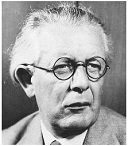- History of Learning Theories
- Learning Theories in Practice
- Behaviorism
- Humanism
- Cognitivism
- Constructivism
Cognitive Constructivism
Definition
Cognitive constructivism has its roots in cognitive psychology and biology and an approach to education that lays emphasis on how the individual learner “maker of meanings” and the ways knowledge is created in order to adapt to the world in which the mechanisms of accommodation and assimilation are key to this processing.
The table below compares the traditional classroom to the constructivist one.
| Traditional Classroom | Constructivist Classroom |
|---|---|
| Curriculum begins with the parts of the whole. Emphasizes basic skills. | Curriculum emphasizes big concepts, beginning with the whole and expanding to include the parts. |
| Strict adherence to fixed curriculum is highly valued. | Pursuit of student questions and interests is valued. |
| Materials are primarily textbooks and workbooks. | Materials include primary sources of material and manipulative materials. |
| Learning is based on repetition. | Learning is interactive, building on what the student already knows. |
| Teachers disseminate information to students; students are recipients of knowledge. | Teachers have a dialogue with students, helping students construct their own knowledge. |
| Teacher’s role is directive, rooted in authority. | Teacher’s role is interactive, rooted in negotiation. |
| Assessment is through testing, correct answers. | Assessment includes student works, observations, and points of view, as well as tests. Process is as important as product. |
| Knowledge is seen as inert. | Knowledge is seen as dynamic, ever changing with our experiences. |
| Students work primarily alone. | Students work primarily in groups. |
Primary Theorist
Jean Piaget

Piaget’s theory is fundamental for constructivist education. His work led to the expansion of understanding of child development and learning as a process of construction that has underpinned much of the theories relating to constructivism (Sawyer, 2006).
One of Piaget’s most prominent contributions is to explain how knowledge develops. A key assumption of constructivism is that mental structures are created from earlier structures, not directly from environmental information (Schunk, 2000). From this perspective then knowledge is not passively transmitted from the environment to the individual, but rather is the result of active cognizing from the cumulative experiences of the individual. To further illustrate the internal and individual constructions of knowledge, Piaget defined three essential components, namely equilibration, assimilation and accommodation to describe the growth of Knowledge. In Piagetian terms,
- Equilibration is the central learning mechanism and the motivating force behind cognitive development, which refers to the optimal state of the cognitive structures being really consistent with the external environment.
- Assimilation and Accommodation are complementary processes to deal with the cognitive conflict.
In this way, the linked processes are the means by which the state of equilibrium (or adaptation) is sought. So the child is either applying previously acquired skills to a new situation in order to understand it or adjusting the skills or accommodating acquired skills to better understand a situation.
Cognitive constructivism is linked to instructional approaches and strategies such as:
